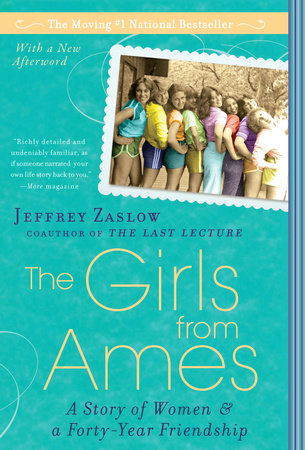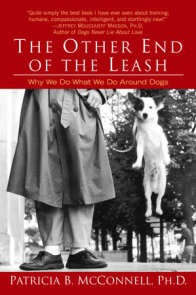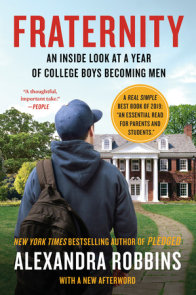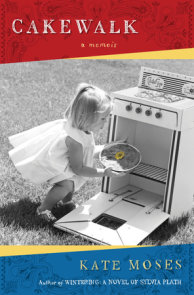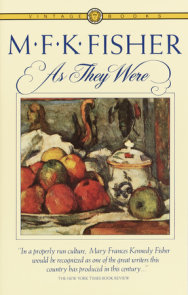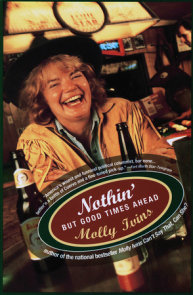READERS GUIDE
Questions and Topics for Discussion
INTRODUCTION
From the coauthor of the million-copy bestseller The Last Lecture comes a moving tribute to female friendships, with the inspiring story of eleven girls and the ten women they became.
Meet the Ames Girls: eleven childhood friends who formed a special bond growing up in Ames, Iowa. As young women, they moved to eight different states, yet managed to maintain an enduring friendship that would carry them through college and careers, marriage and motherhood, dating and divorce, a child’s illness and the mysterious death of one member of their group. Capturing their remarkable story, The Girls from Ames is a testament to the deep bonds of women as they experience life’s joys and challenges — and the power of friendship to triumph over heartbreak and unexpected tragedy.
The girls, now in their forties, have a lifetime of memories in common, some evocative of their generation and some that will resonate with any woman who has ever had a friend. Photograph by photograph, recollection by recollection, occasionally with tears and often with great laughter, their sweeping and moving story is shared by Jeffrey Zaslow, Wall Street Journalcolumnist, as he attempts to define the matchless bonds of female friendship. It demonstrates how close female relationships can shape every aspect of women’s lives – their sense of themselves, their choice of men, their need for validation, their relationships with their mothers, their dreams for their daughters – and reveals how such friendships thrive, rewarding those who have committed to them.
The Girls from Ames is the story of a group of ordinary women who built an extraordinary friendship. With both universal insights and deeply personal moments, it is a book that every woman will relate to and be inspired by.
ABOUT JEFFREY ZASLOWJeffrey Zaslow is a Wall Street Journal columnist and, with Randy Pausch, coauthor of The Last Lecture, the #1 New York Times bestseller now translated into forty-one languages. Zaslow attended Dr. Pausch’s famous lecture and wrote the story that sparked worldwide interest in it. The Girls from Ames also grew out of one of Zaslow’s columns. He lives in suburban Detroit with his wife, Sherry, and daughters Jordan, Alex, and Eden.
DISCUSSION QUESTIONSAt the end of his Introduction, author Jeffrey Zaslow repeats a question posed to him: “Could a man ever really understand women’s friendships?” How would you answer that question? Do you think Zaslow succeeded in his attempt to portray and explain the Ames girls’ long-lasting bonds?Also in the Introduction, Zaslow explains the basis of the Wall Street Journal column that gave birth to this book, saying, “The column focused on why women, more than men, have great urges to hold tightly onto old friends.” Do you agree that women stay closer to friends than men do? Why or why not?“E-mail has been a great gift to the Ames girls’ friendship, as it has to many other women’s friendships in recent years,” (page 76). Talk about how technology has changed friendships in the past decade or so. Are you in more regular or better touch with friends because of e-mail, texting, Facebook, Twitter, or IM? Have you formed new relationships—or, reignited dormant ones—as a result of social networking sites?Did you identify with one or more of the Ames girls, either in adolescence or adulthood? If so, what did you have in common with them?“Male friendships are often born on the athletic fields,” (page 54). What do you believe comprises male friendships? Do they form through activities like sports, or through something different? Do you know men who are part of a group much like the Ames girls’? If so, how does the male group differ from the female?Which of the Ames women do you think strayed farthest from her Midwestern upbringing, or defied the expectations of someone raised in her hometown?Cathy tries to explain the attachment between the women as one borne out of shared roots: “We root each other to the core of who we are, rather than what defines us as adults—by careers or spouses or kids. There’s a young girl in each of us who is still full of life,” (page 96). Do you think it’s common for people who were close childhood friends to maintain that bond in adulthood?“Researchers worry about this current generation of girls. Studies suggest that the average girl today is likely to grow up to be a lifelong dieter, to have a distorted body image, and to be emotionally scarred by cliques,” (page 114). How has adolescence changed from when you were young to what a teenager experiences today? Do you share the concern that the new generation of girls faces a tougher time than young women of bygone eras? What societal or cultural factors might account for this shift?In Chapter 10, Marilyn’s sister explains to her: “Men who’ve confided only in a spouse or a girlfriend can feel lost after a breakup or divorce, because they lose their only confidant. But for a woman with close female friends, the end of a romantic relationship is more bearable because they haven’t lost their entire support system,” (page 146). What do you think of this supposition? Can you think of examples in your own life that prove this statement to be true, or that dispute it?Talk about the mysterious death of Sheila, and years later the cancer that claimed the life of Karla’s young daughter. How did the Ames girls come together in each case? What are the ways in which having such a tight-knit network of friends helps people through crises like these? A broader question: When friends supplant family, is that a good or bad thing?Do you believe the closeness the girls experienced in childhood was in part a result of growing up in a small town like Ames, Iowa? Would they have been as tight a group of friends if they came of age in a big city, like New York or Chicago or Los Angeles? How much of a factor was Ames in the women’s relationships?Do you have a collection of friends similar to the Ames girls? Who is in your circle? What does this group and its bonds mean to you?







